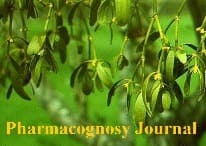International Journal of Fisheries and Aquatic Studies
Volume 3, Issue 2, 2015
Bio-invasion of exotic fish tilapia (Oreochromis mossambicus P. 1852) in Lake Jaisamand, India
Author(s): NC Ujjania, Monika Dubey, LL Sharma, Vijay Kumar Balai, RM Srivastva
Abstract: The tropical freshwater cichlidae fish, Tilapia (Oreochromis mossambicus Peters, 1852) is suitable for any aquatic ecosystems due to its adaptable life history, prolific reproduction, maternal care and ability to tolerate adverse environmental conditions. Tilapia is worldwide fish species and due to its potential and affordability it is considered as aquatic chicken. In the present study population structure of exotic fish tilapia and its impact on indigenous ichthyofauna of Lake Jaisamand (India) is described. Results show that fish production and community structure of local fish fauna were adversely affected by high density and abundance of this exotic fish species tilapia. During 1990-91 fish production was 287 metric tons which was composed by Indian major carps (37%), minor carps (54%) and catfishes (9%) but due to invasion of tilapia it was reduced 105 mt till 1996-97 and fish production composition was changed and it is contributed by Indian major carps (14%), minor carps (3%), catfishes (30%) and tilapia (54%). The reduction of indigenous fauna was continuous and it is noted that contribution of Indian major carps were only (11%), minor carps (3%), catfishes (4%) and tilapia dominated by 82% out of total production 119 metric tons (2012-13). The aquatic environment of lake was very suitable for tilapia and its growth in terms of length/weight was minimum 25.0 cm / 400 g and maximum 43.5 cm / 1620 g during 1997. It shows the stunted growth due to high density and observed 17.5 cm / 98 g minimum and 38.0 cm / 932.5 g maximum during 2013. Study revealed that tilapia is highly invasive due to high abundance and competitive for food and space to Indigenous fish fauna. It is also recommended that there is need of detailed studies on tilapia abundance, recruitment and local environmental conditions to understand the invasion potential and consequences for the endemic aquatic biodiversity.
Download Full Article: Click Here
Journal is Indexed and Abstracted in following Database(s).
    |
    |
       |

